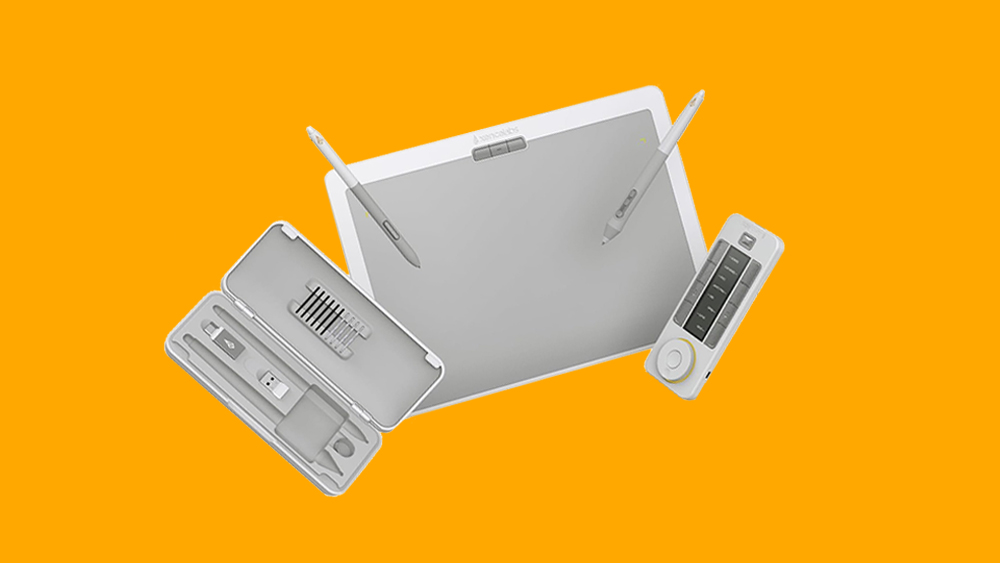Turning research into insight and action
People have bad experiences when using services such as banks and buses. They are not designed as well as products we love to use, such as iPads and BMWs. 'Service Design: From Insight to Implementation' is a book about designing services that are a joy to use, and here we present an excerpt on conducting user research
This is an edited excerpt from Chapter 4 of Service Design: From Insight to Implementation published by Rosenfeld Media.
The process of gathering insights draws on a range of research methodologies, specifically design, usability, and ethnographic methods. Those familiar with UX design, human-centered design, and product and social design projects will be familiar with many of these methods. This chapter describes how these methods are used in the context of service design as well as why and when we use them.
Most designers work in commercial contexts in which budgets and time are generally pressured. Although it is important to try to bring as much rigor to your research process as possible—not least because it helps prove the business case for it—the goal is not necessarily published research. The goal is usable insight that will improve the quality of the service design projects you are working on. It is essential to realize that any insight is better than none and that insight can become addictive. Once your colleagues and clients have a taste, they will come back for more to validate or prototype your initial assumptions.
So where do you start? The answer is, as ever, “It depends.” Instead of preaching an ideal process that you are unlikely to have the chance to fully execute, the following approaches and examples are grouped into realistic levels and scenarios. This framework will help you think about how to generate insights that will fit the current needs of your team and the business, and it is a good starting point for those new to service design.
Levels of insights
Regardless of the arguments you make for its power to generate insights, research is often time consuming and thus expensive. Convincing a new client to commit to a large research budget up front and trust that you will come up with something useful may be a stretch. The process is always the age-old trade-off between time, money, and quality. A useful way to think about this is to have a menu of low, middle, and high levels of detail (and effort) to draw from as the situation requires.
Low—what they say
The low granularity of analysis is basically a summary of what a small sample of around four or five research participants say in relatively short depth interviews (say, 45 minutes), and does not include any other activities, such as in-person observation, workshops, site visits, or testing. Costs include recruitment expenses and any participant incentive. This level of research is unlikely to include a travel budget, so the interviews may need to be conducted in the local area or by telephone or e-mail.
The output produced for the client is a brief executive summary and the top five observations from the depth interviews delivered as a PDF document or in a short presentation. The observations provide some possible quick wins for the client.
Daily design news, reviews, how-tos and more, as picked by the editors.
Middle—what we saw
The middle level of analysis provides deeper and more crafted insights based on research with around 10 participants. This deeper level may be of benefit to clients who require the research to have some long-term value beyond a specific project or who need to share it with a bigger group within the company.
The output provides top insights plus a summary, but is more in-depth than the low level of analysis (Figure 4.1). This middle level also prioritizes issues for the project, which are produced from an internal workshop with the client that is conducted by the service design agency. The insights find- ings may be presented as a written report, presentation slides, a blog, or summary boards (see “Collating and Presenting Your Insights” below for more details).
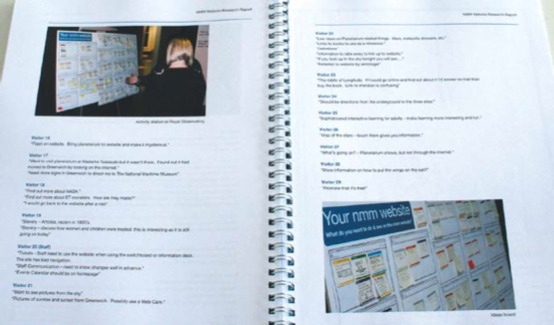
High—what it means
A highly detailed level of analysis requires more depth interviews and a combination of other insights techniques to generate the data. The analysis in this level is much deeper and more systematic, and includes more about what the insights mean strategically for the industry and the client’s project, along with suggested recommendations and solutions for the client. The output can also be more varied, including those from the low and middle variants, but may extend to a short video or a workshop with the client and/or other stakeholders to share and build on the insights gained through the initial research.
Insights-gathering methods
Many of the insights-gathering methods described in this section are drawn from ethnography, but it is important to note that, although we are using ethnographic methods and techniques, we are not doing proper ethnog- raphy in its own right. Ethnography is a term that has had some use and abuse by designers over the past few years in the sense of “Yeah, we did some ethnography and then got on with the design work.” Ethnography has a history, approach, and rigor that is much more loosely interpreted for design research, and when we borrow its methodology, we should be respectful of how and why it was developed in the first place—to understand and document the knowledge, relationships, and beliefs of social or cultural groups, often through long-term participant observation of a year or more. Of course, the ideal scenario is to hire a trained ethnographer to work with the design researchers and design team.
Although the following methods are commonly used by those working on service design projects, this list is not exhaustive. Any methods that help you understand people’s motivations and behaviors more deeply, including those methods you may already be using in interaction or UX work, will contribute to a service design project.
Depth interviews
Depth interviews are long, in-context interviews that tend to be fairly open in their structure. They are an inspiring and productive way of generating insights into an individual’s perceptions, behaviors, and needs. They are also good for uncovering values, opinions, explicit and latent information, interactions, and idea inspiration. These interviews are usually guided by a theme, and they provide an opportunity to explore relevant issues in depth with participants, query and verify what they say, and achieve consensus on what they mean. The results of depth interviews compare very favorably with those from focus groups and are less expensive to undertake. Angus Jenkinson, director of the Centre for Integrated Marketing at the University of Bedfordshire Business School, argues that focus groups are structurally problematic because each member gets only a few minutes to speak and even these short interactions are influenced by social pressures. In contrast, in-depth interviews offer deeper insights and are better value for the money.
Interviews are the most efficient way to engage with people in their own context and allow them to explain how they see things. This means using a number of techniques to make interviews as engaging, informal, and as interactive as possible through drawing and other creative activities. An engaging interview is the key to a productive rapport.
Meet participants in their own homes or places of work to bring ethno- graphic context to the interview (Figure 4.2). If you want to learn about how people carry out their activities in the workplace, for example, interviewing them at home will be of limited use. When in the context of their workplace, however, many visual prompts will be present that can help direct the conversation, and you can take photographs or film the things the participant is talking about. Workplace interviews have some limitations, however, which are discussed in “Business-to-Business Depth Interviews” below.
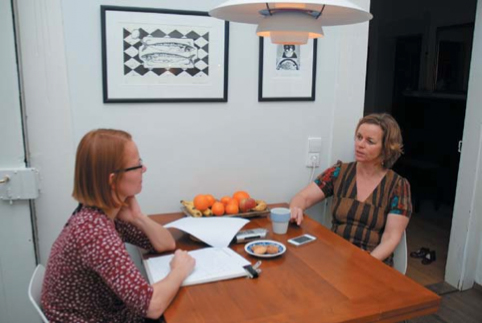
Encourage other members of the design team to attend and engage so they can share the experience of meeting users and discovering insights. Occasionally, you may want to ask clients to attend the interviews, too, but this can be a double-edged sword. Clients will obtain a greater understanding of the methods and project results, and they are often energized and excited when hearing this feedback firsthand, but they need to be prepared to remain passive. Some clients can manage this, but others want to jump in and correct a participant’s misunderstanding of their brand or product, which closes down the participant’s range of responses very quickly and skews the outcome of the interview. In some cases, even the presence of a person representing the company can close down participants’ responses, but it might equally give frustrated users a sense of being heard and encourage them to open up and vent about all of the things that have annoyed them. However, interviewees should never be corrected about something they are explaining, even if they are completely wrong. Instead, ask them how or why they know what they are saying; it will reveal a lot more.
The way participants tell their own stories provides researchers with a rich resource for identifying how they perceive and articulate the subject. Priorities and embellishments are helpful indicators of what is valuable to them, so rather than impose structure, use a loose interview guide to ensure you cover the themes and material you need, and then coax out detail and verify that you have understood their perspective. Depth interviews differ from other methods because they allow the time to uncover this level of detail. They may range from around 45 minutes (probably the shortest usable time, unless you have only a tiny window of time with an expert or top manager) to two or three hours, especially if you are asking someone to show you around his or her home or workplace.
Variations on the depth interview
Two other types of depth interview are focused more on specific questions than the open interviews described above: consumer interviews in pairs and business-to-business (B2B) interviews. They differ slightly in terms of what you are trying or able to discover and in terms of the interpersonal dynamics and structure.
Interviewing consumers in pairs
For some people, a one-to-one interview can feel imposing and exposing, although a good interviewer should be able to put them at ease quickly. In one-to-one situations, consumers in particular may say what they think you want to hear. For this reason, we find consumer research interviews conducted with couples or pairs of friends can be more useful than inter- views with individuals because the subjects feed off each other’s answers and build on them. If they know each other well, they are likely to feel more comfortable and give genuine answers. We have found that pairs provide the most truthful feedback, and of course, you get two people’s opinions in the same time it takes to interview one person. In this respect, pairs represent the best value for the client.
One thing to be careful of is when one person puts opinions in the mouth of the other. This usually happens with couples in long-term relationships more than with friends. A husband might explain to the interviewer that his wife hates a particular TV show or that she knows nothing about how their home entertainment equipment is set up, for example. The dynamics of the relationship might mean that she does not contradict this statement during the interview, even if it is not true. Even if it is true, if it is part of the research topic, you will want to find out why she does not like a particular show. Perhaps the reason is that her husband always complains loudly when it is on, and it has nothing to do with the show itself. On the other hand, the wife might also contradict her husband by revealing that he has no idea how the home entertainment system works either. We have experienced this kind of “he said/she said” thing in more than one interview over the years.
As Ben Scales from the Association for Qualitative Research says, “Friendship or family cells provide a natural form of censorship. After all, it’s hard to exaggerate about your behavior when you’ve got someone sitting next to you who knows you well.”
Children or teenagers tend to feel uncomfortable when interviewed on their own (and conducting such interviews may be considered inappropriate in some cultures and contexts), so you are better off interviewing them in pairs. Be aware, however, that they will almost certainly try to impress each other, especially at certain ages (teenage boys, for example). See Researching with Children and Young People: Research Design, Methods and Analysis for a good reference guide in this area.
Business-to-business depth interviews
One-to-one depth interviews are best used in B2B situations or when interviewing client stakeholders. You may be interviewing business customers or suppliers of your client. In a one-to-one context, they are more likely to tell you things about their company that they might not say in front of their colleagues or superiors. Also, B2B interviews can be difficult to set up if more than one person is involved because their schedules may conflict with each other’s and with yours.
Interviewing or observing people at their place of work is useful, especially if you are interested in the workplace context and their workflow, but if you are asking people to talk openly about their feelings about their job, then B2B interviews may be better conducted in a neutral environment, such as a coffee shop. People may not be comfortable talking about work in their home, and they may not be as open and honest if interviewed in the workplace.
Sometimes you have no choice about where or with whom you conduct interviews. Some insight from an interview conducted in less than optimal conditions is usually better than none at all, unless it really appears to be contradictory or the conditions have skewed the responses too much. In the end, field researchers cannot avoid these elements, just as they cannot completely jettison their own cultural baggage and interpretations. Most people think they can be objective, but this is an illusion. Sometimes you just do not develop a rapport with interviewees or their views are so different from yours that it is hard not to react negatively, even if only through unconscious body language. Due to a last-minute scheduling change, Andy once found himself interviewing a group of lawyers from an oil exploration company about hydrogen fuel cell transportation options for the future. Needless to say, the atmosphere was not particularly open and jovial. The best that you can do in these situations is to be aware of these influences and take them into account when making interpretations of the transcripts and other data, or to simply thank the interviewees and end the interviews early.
Preparing for interviews
Indi Young’s Mental Models has a very good section on setting up interviews, with detailed advice about working out who to recruit and dealing with research participant recruitment agencies. Below is a general overview of the process that we usually follow.
- Recruit: This step can take two to three weeks, so it should be started early. If possible, use a recruitment company to do the hard work of recruiting interviewees. This may seem expensive but saves a lot of time. You need to be as clear as possible with the recruiters about who you need. More unusual participants (such as farriers or specific medical patients) may need to be sourced with the client’s help. You can also use your own (real or virtual) social networks to interview friends of friends. This can help create an instant level of trust with someone who is still essentially a stranger.
- Research: You may not know much about the topic you are interviewing on. If this is the case, you may need to research the area, but don’t spend too much time on it. Sometimes it is best to be a little naive because it prevents you from making assumptions; otherwise, you will have to learn to ask deliberately naive questions.
- Plan the topics: When you have found out more, construct a prompt card. This should be a list of topics you want to cover during the interview, not a strict list of specific questions. The interview should be a conversation, not an interrogation.
- Design the tools: Design appropriate paper activities to make the interview more engaging and interactive (see “Probes and Tools” below).
- Prepare: Think through the details of going out to do the depth interviews (see “Practicalities of Conducting Insights Research” below).
Participant observation
Participant observation, or shadowing, provides rich, in-depth, and accurate insights into how people use products, processes, and procedures. It is very useful for understanding context, behavior, motivations, interactions, and the reality of what people do, rather than what they say they do. It gives good depth and insight into latent needs—the things people actually need, but perhaps do not know that they need because they are so used to their old routine.
Observation is usually quite time consuming in comparison to other insights methods and can be difficult to arrange because someone must be prepared to have you accompany them for a few hours or a full day. In some situations, such as shadowing someone trying to find their way around a public transit system, this method is not too invasive. In workplace situations, it can be trickier because a sales representative may not want you sitting there while he or she is in a meeting with a customer, or people may be uncomfortable discussing confidential information in front of you, even if you have signed a nondisclosure agreement.
Short observations are a useful starting point when the team is not familiar with the area being researched. They give you a sense of the atmosphere and environment in which people are carrying out activities (e.g., buying, selling, giving a diagnosis, receiving treatment). They can also give you a good sense of activity flows (e.g., new patients’ names are written on the whiteboard and entered into the computer, and a blue file is used to mark their nonemergency status). Longer, in-depth observations can be used to uncover fresh insights into even familiar activities. Sometimes the fact that a task is very commonly carried out can blind people to the opportunities for improvement.
It is essential with this type of research to carry out the observations in the participant’s natural environment, such as an office, home, or in the context of an activity, such as trying to find the right train across town (Figure 4.3). Otherwise, you will have nothing to observe, or you will be observing tasks out of their usual context.
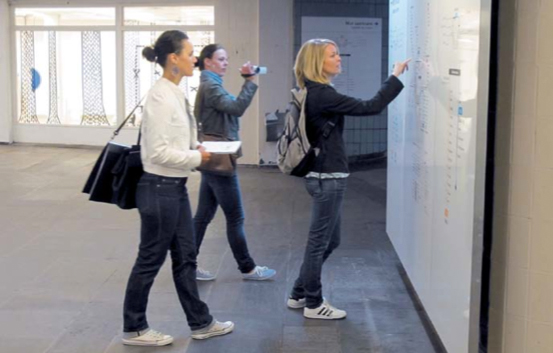
The goals of participant observation depend on who the participant is, whether a customer or a business. Observing customers means observing people in their everyday lives. This method is useful when working with customers to uncover how they use and engage with products and services. Observing the participant in a professional role is often done when working with clients to help uncover how their internal procedures can be improved.
When observing, there are two approaches you can take: the fly-on-the-wall method in which you just observe and pretend not to be there, or a more active approach in which you interact with users by asking them questions about what they are doing. People do all sorts of strange and wonderful things when they work or use something, and they often have developed their own workarounds for problems with a system, service, or interface. Even if you think you can see their rationale, it helps to act a little naive and ask them to explain what they are doing and why.
Preparing for participant observation
Here are some steps to follow when planning participant observations.
- Recruit: Arranging these sessions can be tricky because you are intruding into someone’s life and workflow. You don’t want to get in the way or miss anything, so good planning is essential and you need to be sure to find the best candidate in the organization for your research goals.
- Set expectations: Make sure you understand what the client wants from the insights activity so that you are aware of what to look out for when observing. This understanding will also help with analysis. Create a list of questions that you want answered to serve as a guide for what to watch for. At the same time, it is important to remain open to whatever presents itself during the observation period. You don’t want to miss something interesting because you have your nose buried in your notes.
- Design the tools: To record the activity, you may want to create some paper activities for you or the participant to complete (discussed in “Probes and Tools” below).
- Prepare: Each observation activity is unique, so preparation is important. Think about what you should wear and how you will record what you observe. Decide how much time you will need to spend in observation to obtain the information you require.
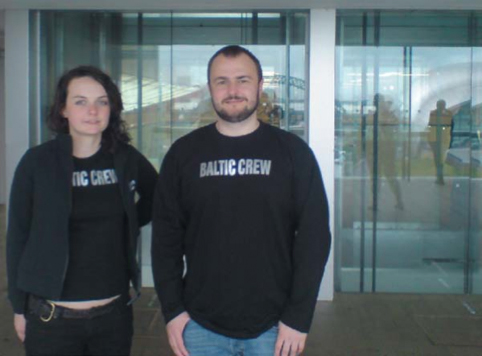
Participation—becoming the user
Participation is a very involved but enlightening way to gain user insights. It is not just a way to study or document the user’s lifestyle or occupation, but allows you to become part of the user group you are researching (Figure 4.4).
Participation can provide researchers with a unique, firsthand under- standing of the way users feel and behave, and it is an excellent strategy for developing empathy and asking questions clients might not think of. Researchers can experience things for themselves that may be hard for someone to describe to them.
We encourage clients to try the participation technique of becoming their own customers. This helps them empathize with their customers and allows them to uncover insights and ideas for improvement for themselves, not just hear it secondhand from us. For many clients, this activity can be quite daunting, but it can also be an exciting and engaging experience for them. The client-as-customer approach can also be done with the service safari described below.
Participation activities can be as simple as being a mystery shopper or as complex as getting a job with the client to experience being a new employee. When it is not possible to literally become your users—because they have a disability, for example—you can simulate the experience. To feel what it is like to use a service’s touchpoints as an elderly person, you could wear an “aging suit” made up of heavy gloves to simulate stiffness and loss of dexterity in the hands, a helmet/visor to limit vision, and other elements to restrict movement. You can spend the day in a wheelchair to see what it is like to go shopping or use public transportation.
Preparing for participation
Here are a few specific tips to bear in mind when planning to use the participation method.
- Be open: You may have to do things you haven’t done before; it is impor- tant to be open and embrace them. You want to avoid distracting the people you are studying by having them look after you.
- Be organized: Good planning is essential. You are about to wade into someone else’s workspace and workflow. You are also likely to be representing your client to the public or your client’s customers. Treat what you are doing with the same respect you would show any real job. Some things will happen spontaneously, so have everything you need to docu- ment the situation at hand.
- Document: Choose the most suitable method for recording the task you are carrying out. Do not insist on sticking a camera in someone’s face when discreet note taking would be more appropriate.
This is an edited excerpt from Chapter 4 of Service Design: From Insight to Implementation published by Rosenfeld Media. Please use the discount code NETMAG12, good for 20% off all products purchased from Rosenfeld Media

The Creative Bloq team is made up of a group of art and design enthusiasts, and has changed and evolved since Creative Bloq began back in 2012. The current website team consists of eight full-time members of staff: Editor Georgia Coggan, Deputy Editor Rosie Hilder, Ecommerce Editor Beren Neale, Senior News Editor Daniel Piper, Editor, Digital Art and 3D Ian Dean, Tech Reviews Editor Erlingur Einarsson, Ecommerce Writer Beth Nicholls and Staff Writer Natalie Fear, as well as a roster of freelancers from around the world. The ImagineFX magazine team also pitch in, ensuring that content from leading digital art publication ImagineFX is represented on Creative Bloq.
